A remarkable façade can speak loud about the architect’s creative vision and the structure’s overall design concept. It creates the first impression of the building and is the clue that tells the viewer what it has to offer. Utilizing unconventional materials and forms, architects can make a façade truly stand out.
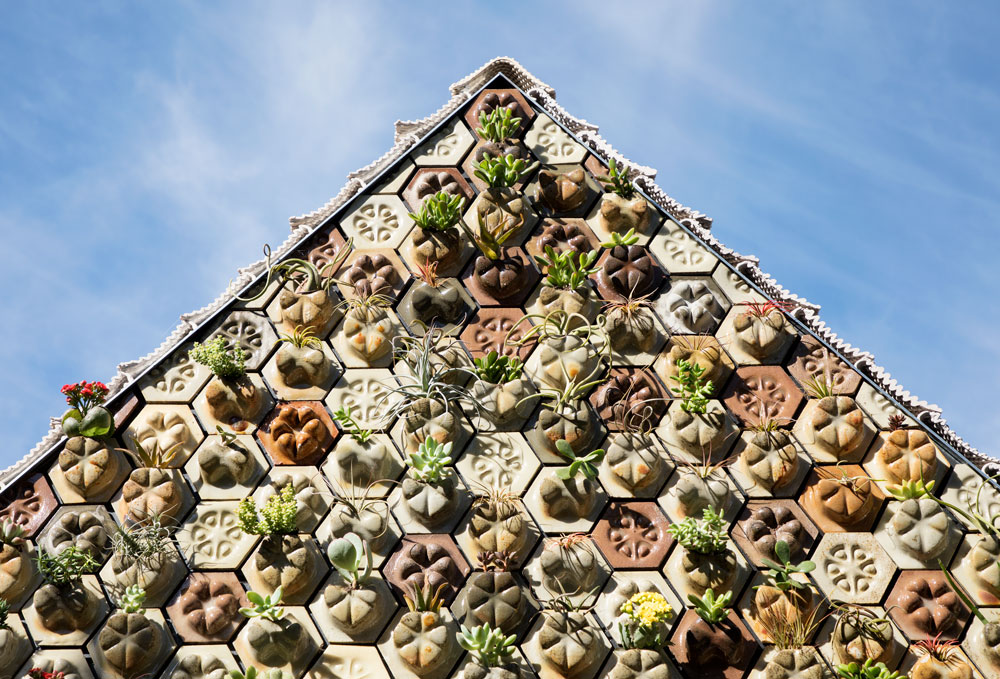
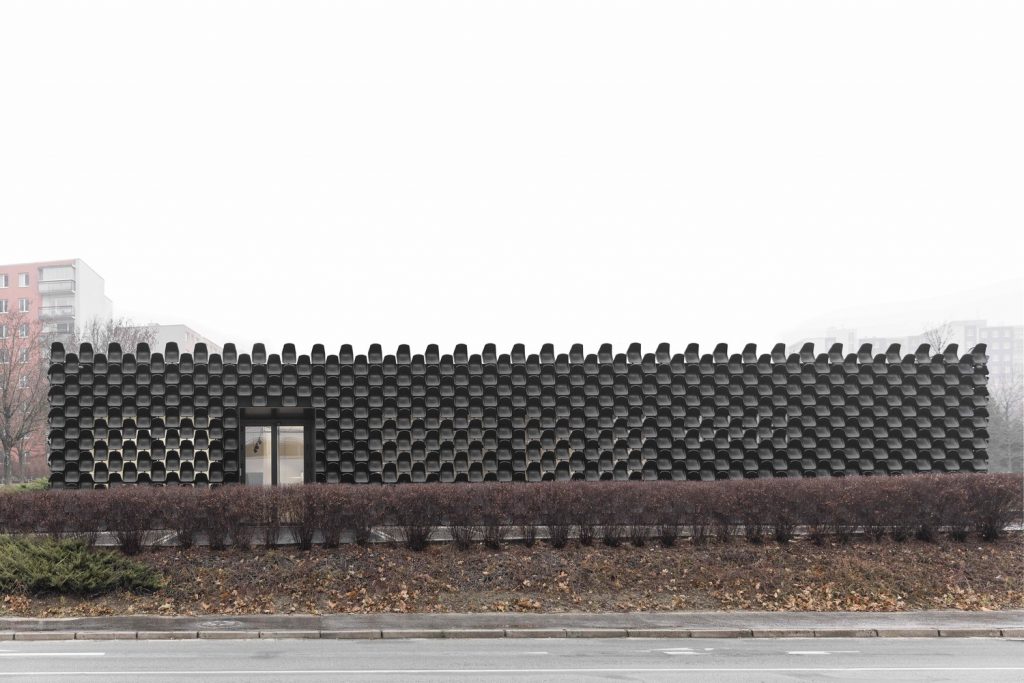
MY DVA showroom by CHYBIK + KRISTOF; ph: Lukas Pelech
CHYBIK + KRISTOF, an architecture and urban design practice with offices in Prague, Brno and Bratislava has transformed a car showroom into a furniture site for the MY DVA group, one of the leading producers of office, school and metal furniture. Commissioned to ‘do it cheap, ideally for free’, the architects Ondřej Chybík and Michal Krištof were challenged to find a material which should have been based on the usage of a minimum amount of money, but with a maximum effect to enhance the former building which was technically and morally outdated. The team chose to clad the structure by the shell composed of chairs of the company’s production.
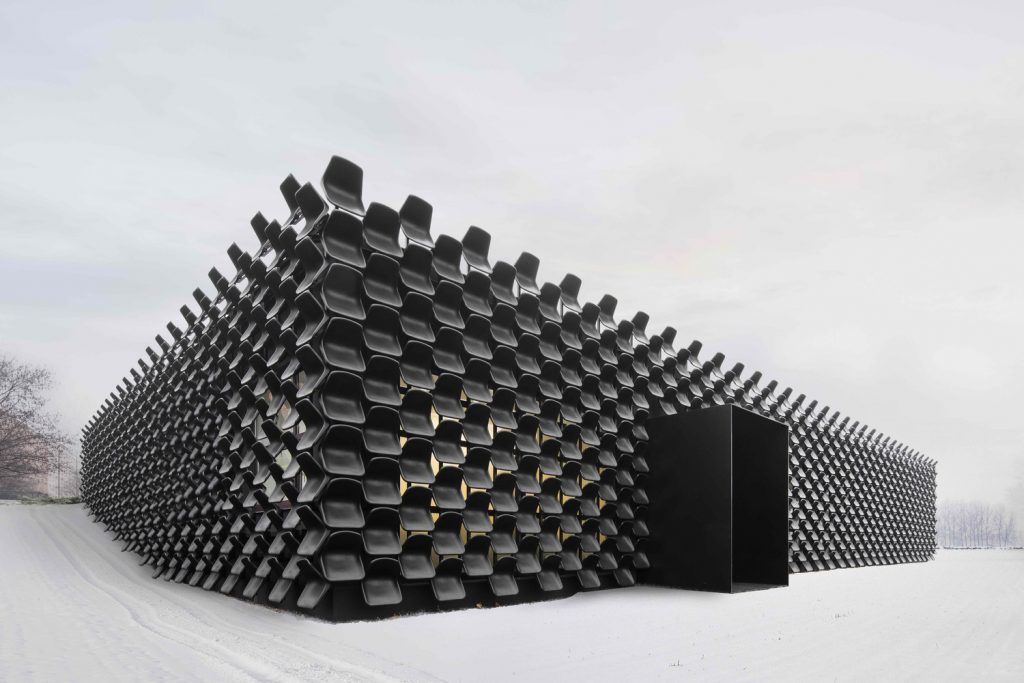
MY DVA showroom by CHYBIK + KRISTOF; ph: Lukas Pelech
The resulting façade is covered with an abstract homogenous texture consisting of a single product – 900 basic plastic black seats Vicenza fixed on a structure made of steel. The easily remembered solution allowed the architects to create an exterior which reflects what is hidden inside the building better than any sign or banner advertising, but also address several issues at a time.
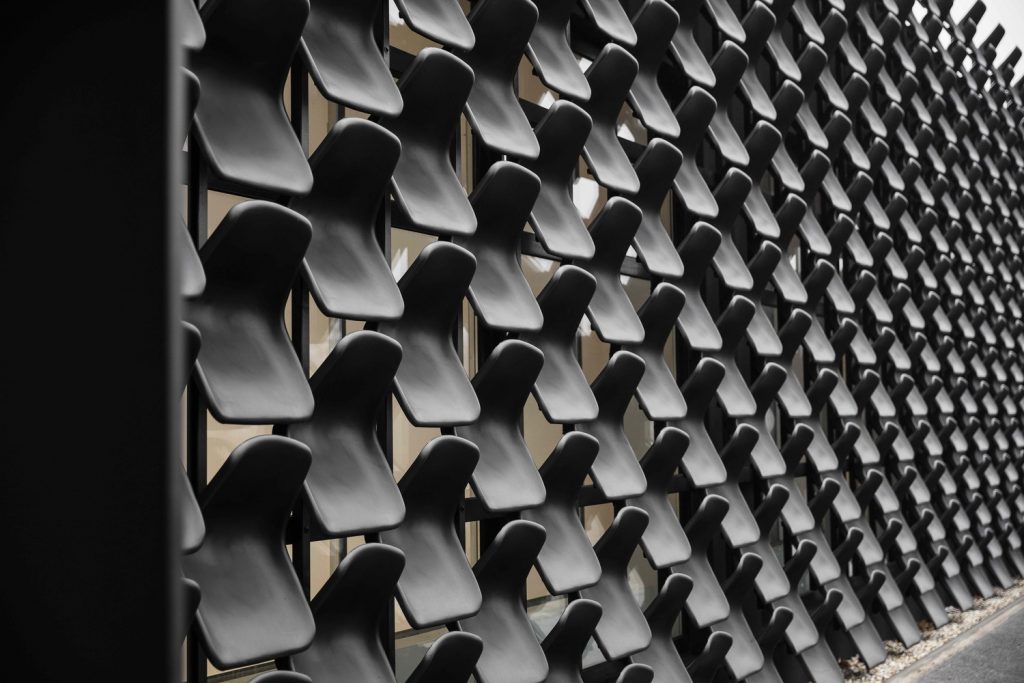
MY DVA showroom by CHYBIK + KRISTOF; ph: Lukas Pelech
Apart from the low price of the cladding material – seat coming at 3 euro per piece – the utilized black granulate is perfect for outdoors, being resistant to different weather conditions and UV light. In case of a mechanical damage, each individual chair can be replaced for a new one, while the façade cleaning can be easily done once or twice a year by a high-pressure cleaner.
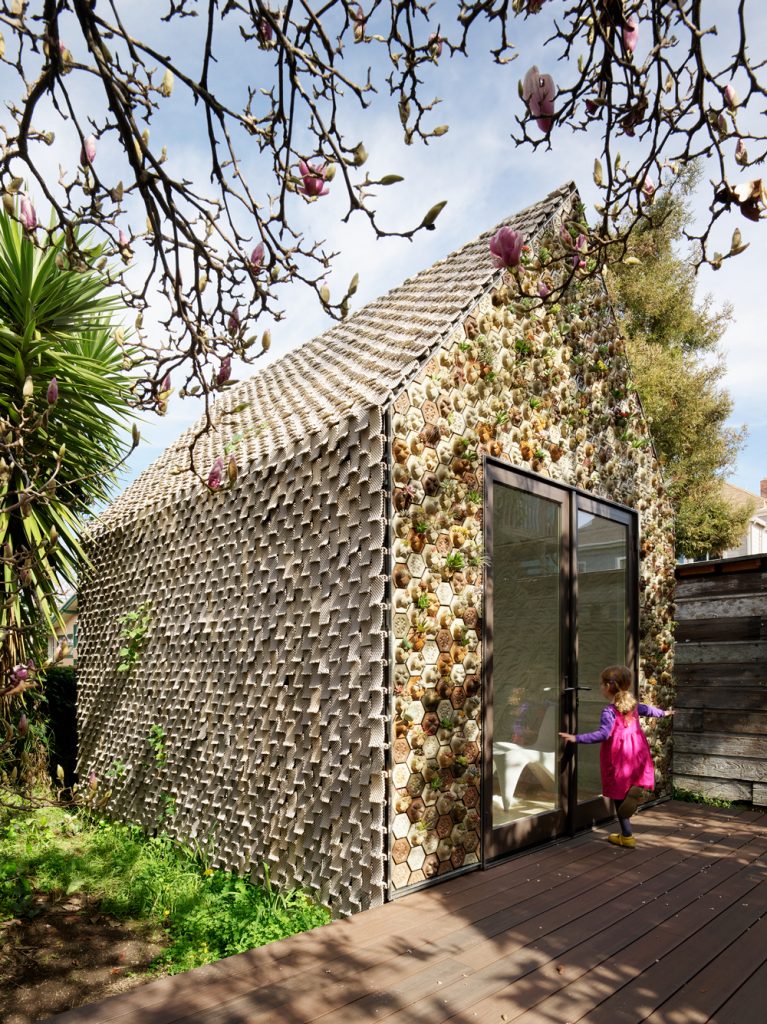
The Cabin of 3D Printed Curiosities by Emerging Objects; ph: Matthew Millman (also header image)
Emerging Objects, independent 3D-Printing MAKE-tank based in San Francisco and led by Ronald Rael, describe the front façade of their 3D printed cabin as a box of exquisite chocolates. The exterior consists of a number of 3D printed planter tiles that create a living wall of succulents which thrive naturally in California climate.
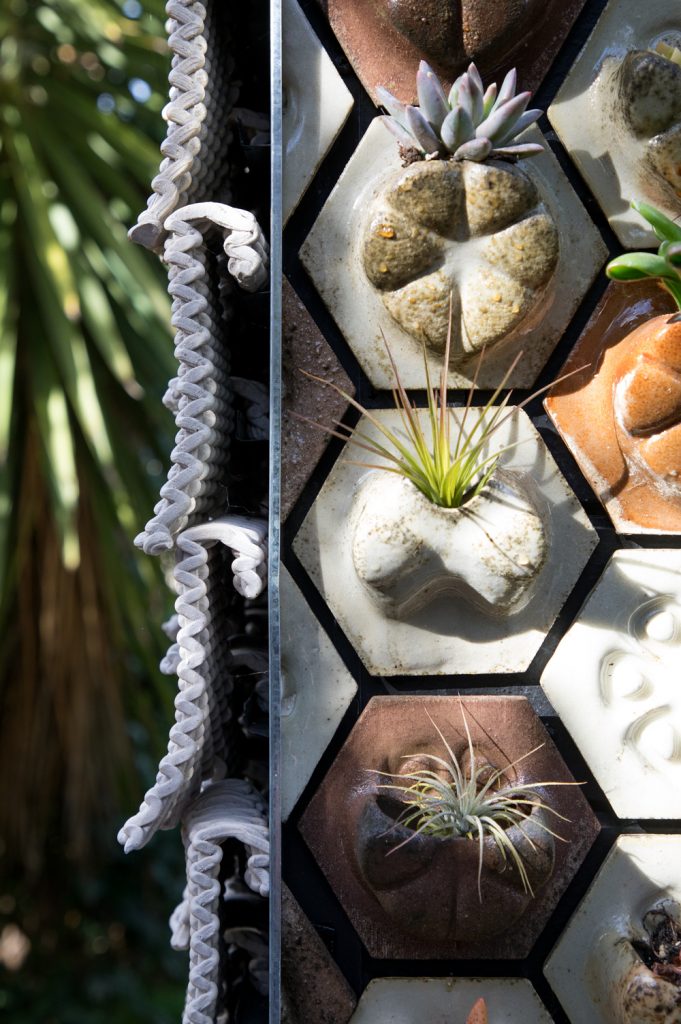
The Cabin of 3D Printed Curiosities by Emerging Objects; ph: Matthew Millman
Utilizing different materials such as Portland cement, sawdust, chardonnay pomace, and combinations thereof, the structure demonstrates the architectural potential of additive manufacturing on a weather-tight, structurally sound building.
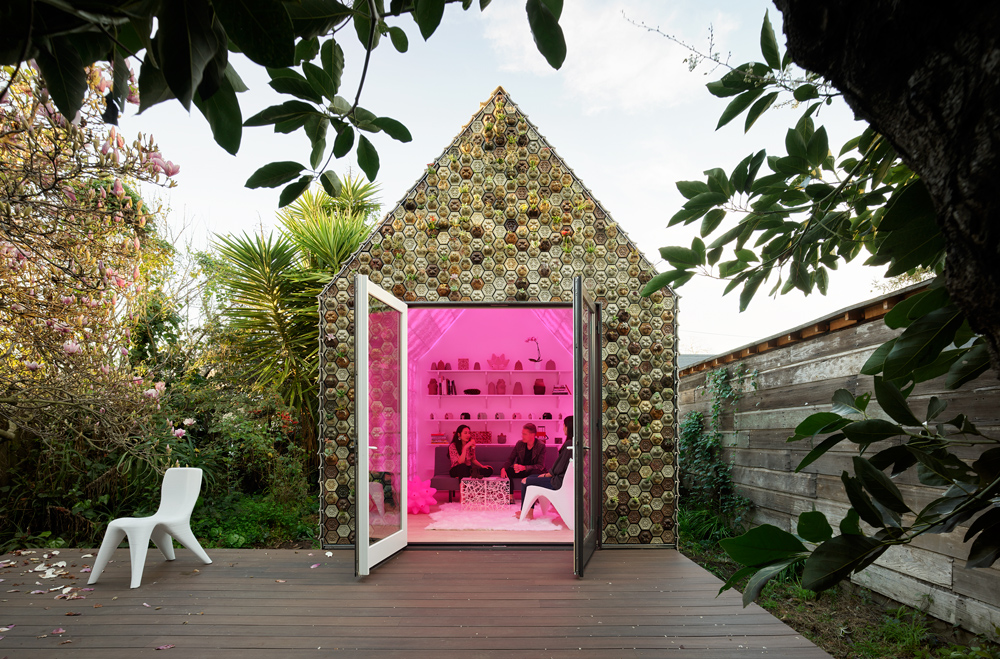
The Cabin of 3D Printed Curiosities by Emerging Objects; ph: Matthew Millman
The roof and contiguous facades to the gable are clad in seed stitch tiles—a 3D printed ceramic cladding system that serves as a rain screen and are very easy to assemble. The tiles got their name because of their surface which visually emulates a knitting technique called the seed stitch.
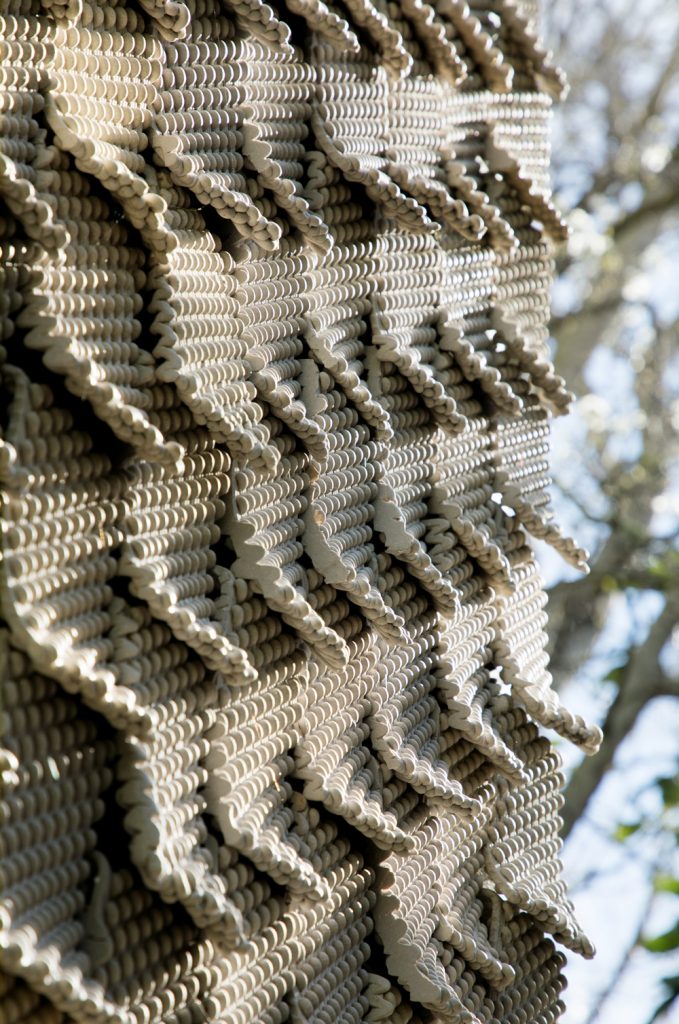
The Cabin of 3D Printed Curiosities by Emerging Objects; ph: Matthew Millman
Although all the ceramic tiles are printed from the same file, the manufacturing process includes tiles waving back and forth, which causes the printer to pull at the line of clay and create longer and shorter loops toward the end of each tile, producing a distinct machine-made texture, each tile created intentionally unique. The cabin demonstrates that 3D printing can be beautiful, meaningful, and well crafted – not crude, fast and cheap.
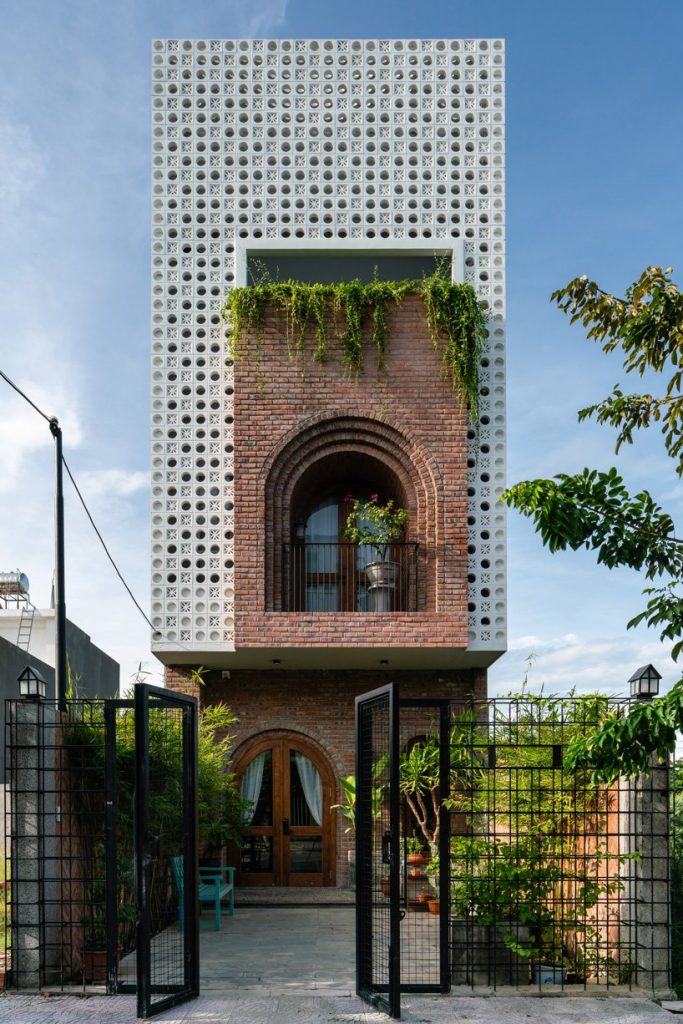
Family residence in Vietnam by Cội Design ; ph: Quangdam
Vietnamese design company Cội Design have designed a house aimed to be a rustic, peaceful place in the heart of the bustling city. To bring the users of this tall and narrow urban house closer to nature, they added a perforated façade as well as refined skylights and doorways, all of which allow plenty of natural light and wind enter throughout the day.
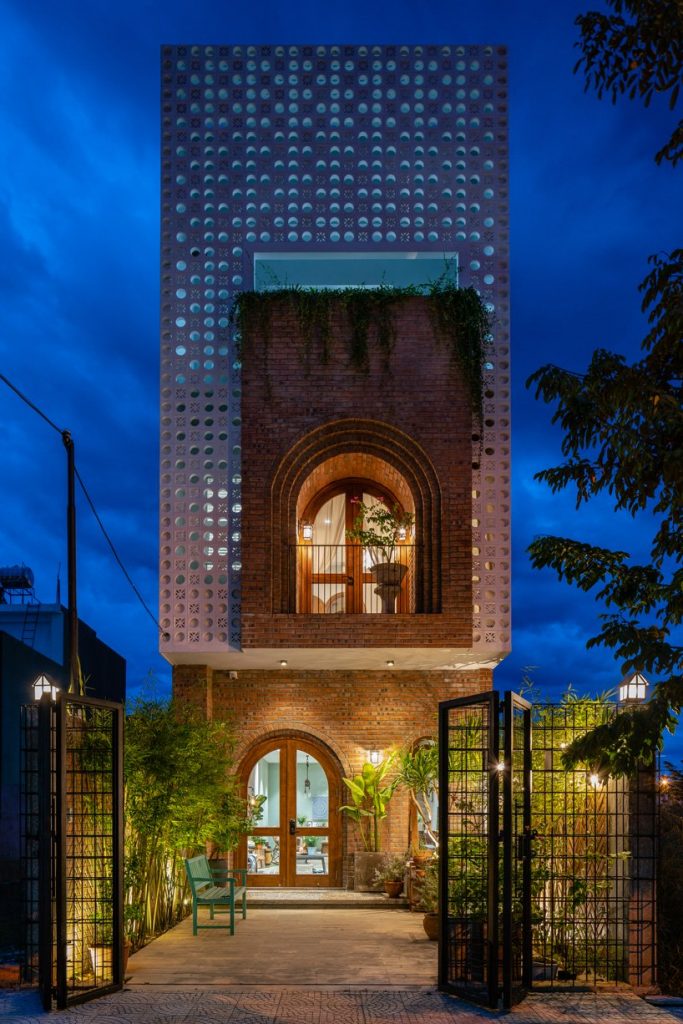
Family residence in Vietnam by Cội Design ; ph: Quangdam
At night the house looks even more splendid with the warm glow coming through the patterned exterior.
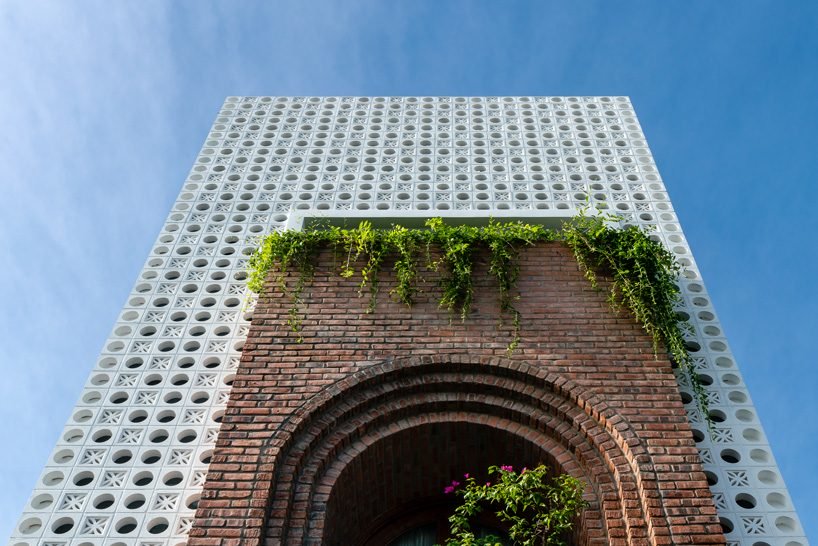
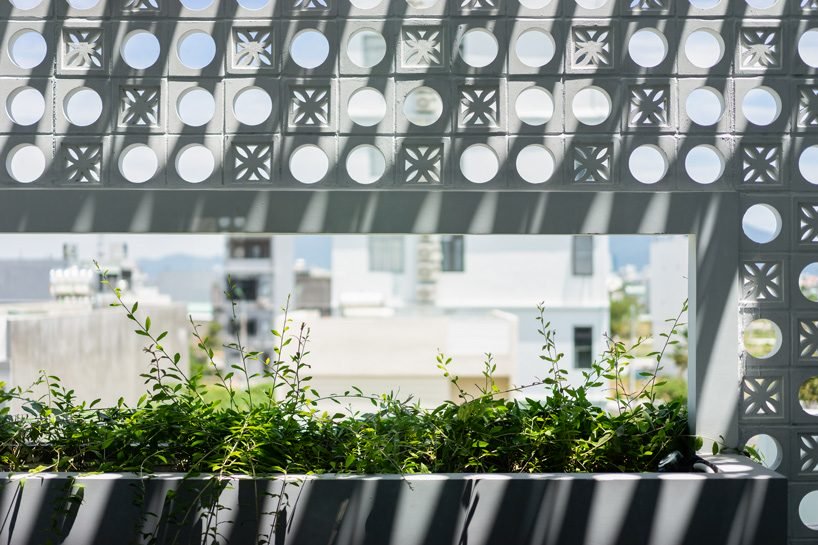
Family residence in Vietnam by Cội Design ; ph: Quangdam
According to the studio, the aesthetics of the house are created by skillful arrangement of hundreds of windflowers, combined with rough walls that bring light into the interior and maximize the view to the outside.
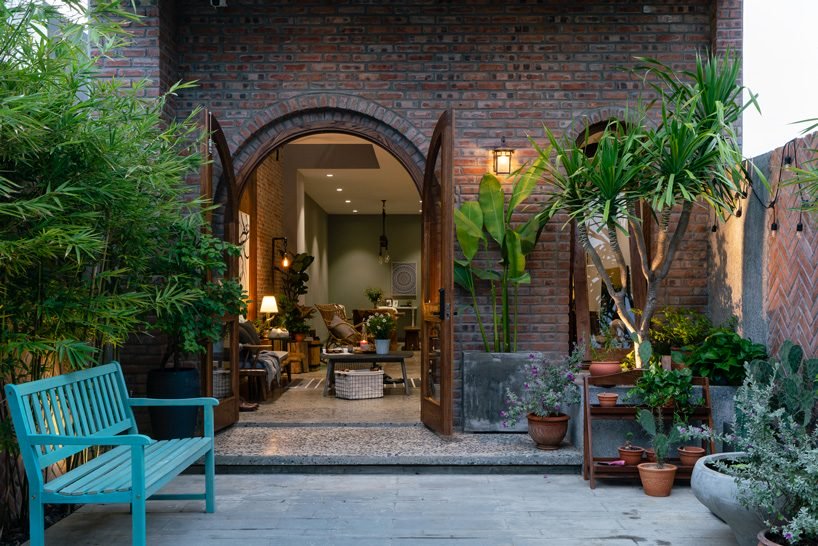
Family residence in Vietnam by Cội Design ; ph: Quangdam
To enhance the experience of interaction with the environment, the architects have designed an interior overlooking a green bamboo garden with a dining table for family gatherings.
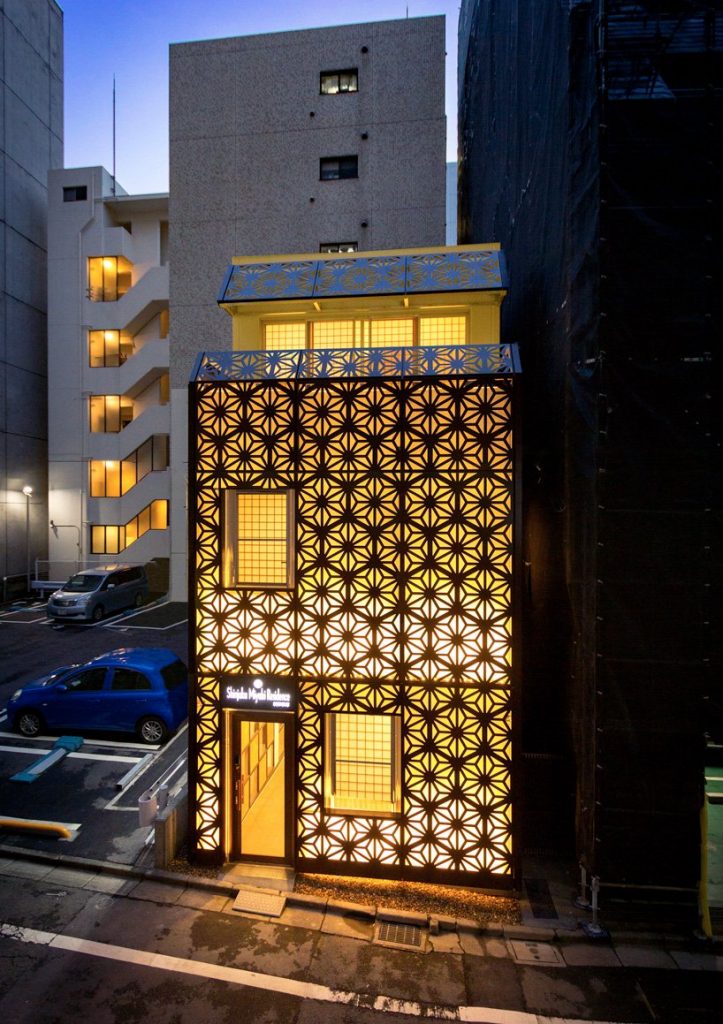
Shinjuku Miyabi Residence by Himematsu Architecture`
A laser-cut façade of 2mm thin aluminum makes the Shinjuku Miyabi Residence hotel by Himematsu Architecture stand out from the surrounding streetscape of one of Tokyo’s central areas.
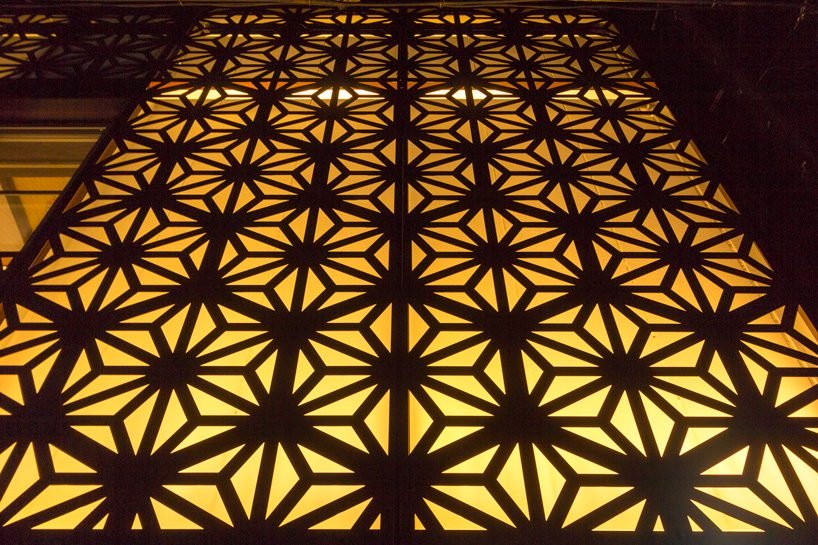
Shinjuku Miyabi Residence by Himematsu Architecture
Specially designed for tourists outside of Japan expected to come visiting for the Olympics 2020, the hotel is aimed to meet them with Japanese culture and be remembered. The exterior wall features a traditional Japanese pattern of hemp leaves used for newborn baby clothes as a wish for the newly born hotel’s growth and development. On the third floor, one of the guest rooms has access to a balcony, which becomes part of the patterned façade and has a handrail made of aluminum panels.
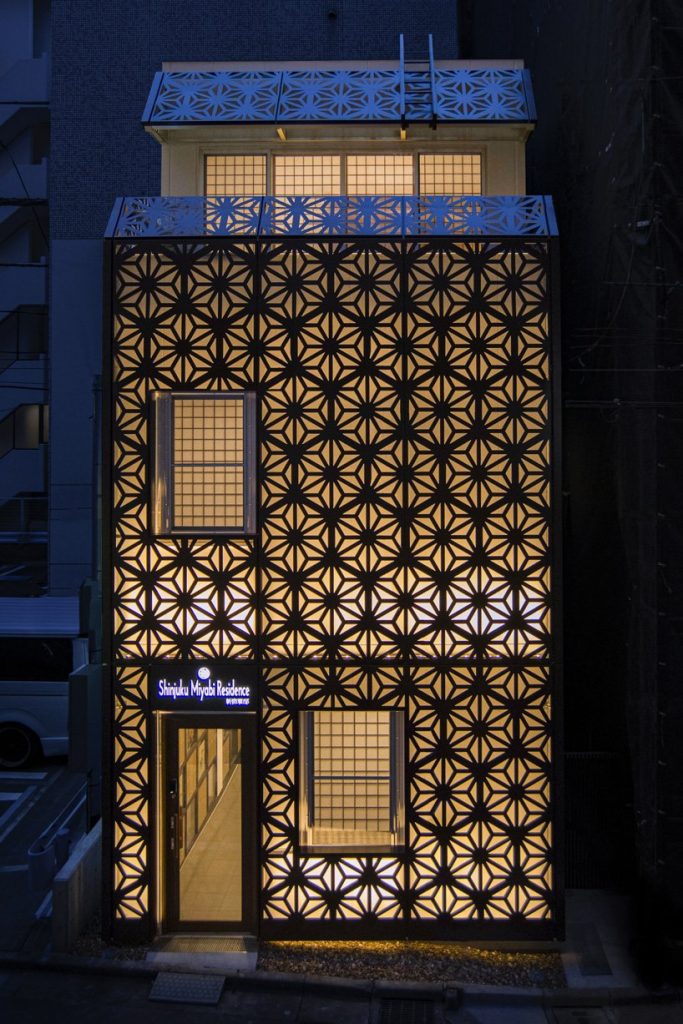
Shinjuku Miyabi Residence by Himematsu Architecture
The façade is especially spectacular at night, lighting set between the building’s exterior wall and the aluminum surface highlights its pattern from the back.
The interior includes other objects and materials that pay homage to traditional Japanese culture, such as ukiyoe paintings, red leaves of Japanese maple, lacquered akamatsu wood.